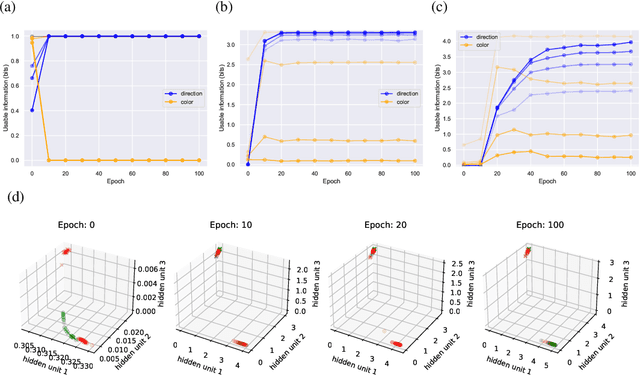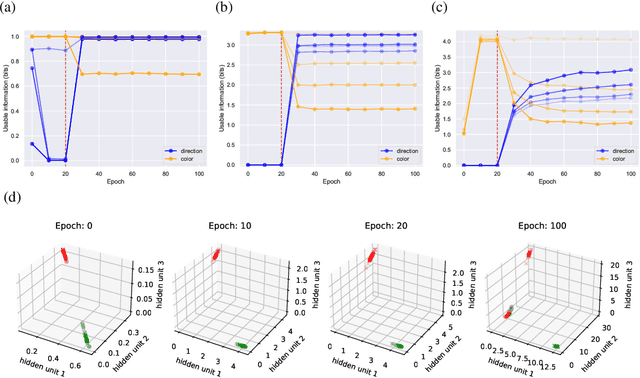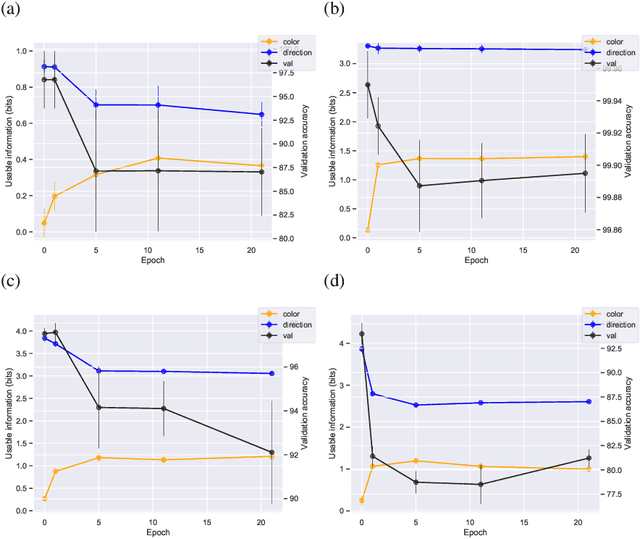Usable Information and Evolution of Optimal Representations During Training
Paper and Code
Oct 06, 2020



We introduce a notion of usable information contained in the representation learned by a deep network, and use it to study how optimal representations for the task emerge during training, and how they adapt to different tasks. We use this to characterize the transient dynamics of deep neural networks on perceptual decision-making tasks inspired by neuroscience literature. In particular, we show that both the random initialization and the implicit regularization from Stochastic Gradient Descent play an important role in learning minimal sufficient representations for the task. If the network is not randomly initialized, we show that the training may not recover an optimal representation, increasing the chance of overfitting.
View paper on
 OpenReview
OpenReview
 Add to Chrome
Add to Chrome Add to Firefox
Add to Firefox Add to Edge
Add to Edge